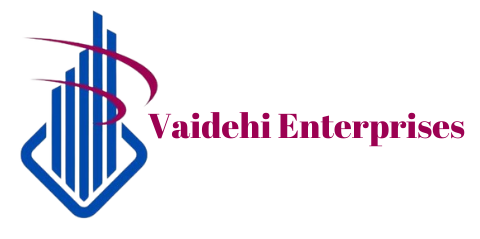What Are the Most Attractive Co-Working Space Designs for Startups
What Are the Most Attractive Co-Working Space Designs for Startups
Co-working spaces have transformed the way startups operate, providing flexible, collaborative environments that foster creativity and innovation. The design of these spaces plays a crucial role in attracting and retaining members, especially for startups that thrive on community and collaboration. This blog explores the most attractive co-working space designs for startups, focusing on flexible layouts, biophilic elements, community-centric spaces, technology integration, and aesthetics.

- Flexible Layouts: Adapting to Diverse Needs
Flexibility is essential in co-working spaces, as startups often have varying requirements based on their size, team dynamics, and work styles.
Key Features of Flexible Layouts
- Modular Furniture: Utilize modular desks and seating that can be easily rearranged to accommodate different group sizes or activities. This adaptability allows teams to create personalized work environments that suit their specific needs.
- Movable Partitions: Incorporate adjustable barriers or movable walls to create private meeting areas or quiet zones when necessary. This feature enables users to customize their space for focused work or collaborative brainstorming.
- Multi-functional Spaces: Design areas that serve multiple purposes—such as lounges that can be converted into meeting rooms—maximizing space utilization and encouraging diverse activities.
Benefits of Flexible Layouts
- Enhanced Collaboration: Flexible designs promote interaction among users, facilitating networking and idea exchange.
- Personalized Work Environments: Startups can create their ideal workspace, enhancing comfort and productivity.
- Biophilic Elements: Bringing Nature Indoors
Biophilic design focuses on connecting people with nature, which has been shown to improve well-being and productivity—essential factors for startups aiming for high performance.
Key Features of Biophilic Design
- Natural Light: Maximize natural light through large windows and skylights to create a bright, uplifting atmosphere. Exposure to sunlight can enhance mood and energy levels.
- Indoor Plants: Incorporate greenery through potted plants, living walls, or vertical gardens. These elements improve air quality while providing visual interest and a calming effect.
- Natural Materials: Use materials like wood, stone, and bamboo to add warmth and texture, making the space feel more organic and welcoming.
Benefits of Biophilic Design
- Improved Well-being: Access to natural elements reduces stress and enhances focus among startup teams.
- Aesthetic Appeal: Natural designs create visually pleasing environments that encourage social sharing on platforms like Instagram.
- Community-Centric Spaces: Fostering Connection
Co-working spaces thrive on community interaction, making it essential to design environments that encourage engagement among users.
Key Features of Community-Centric Designs
- Common Areas: Create inviting communal hubs where users can relax, socialize, or collaborate. These areas might include coffee bars, lounges, or game zones that encourage informal interactions.
- Flexible Meeting Spaces: Incorporate informal meeting areas with comfortable seating arrangements that invite spontaneous discussions and brainstorming sessions.
- Event Spaces: Design adaptable spaces for hosting workshops, networking events, or community gatherings that foster collaboration and connection.
Benefits of Community-Centric Designs
- Enhanced Networking Opportunities: Well-designed communal areas encourage users to interact, leading to potential collaborations and partnerships.
- Stronger Sense of Belonging: Creating a community-focused environment makes members feel more connected to the space and each other.
- Technology Integration: Supporting Modern Work Needs
As technology continues to advance rapidly, integrating modern tech solutions into co-working spaces is crucial for enhancing user experience.
Key Features of Technology Integration
- Smart Lighting Systems: Implement adjustable lighting solutions that respond to natural light levels or user preferences. Adjustable lighting enhances focus during work hours while creating a cozy atmosphere after hours.
- High-Speed Internet Access: Ensure reliable Wi-Fi connectivity throughout the space. Consider incorporating wired connections for devices requiring stable connections.
- Interactive Collaboration Tools: Provide smart boards, video conferencing facilities, and charging stations to facilitate seamless communication among users.
Benefits of Technology Integration
- Increased Efficiency: Streamlined technology enhances workflow by reducing disruptions caused by technical issues.
- Enhanced Collaboration: Integrated tools make it easier for teams to work together effectively, regardless of their physical location.
- Aesthetics: Creating an Inviting Atmosphere
The aesthetic appeal of a co-working space significantly impacts mood and productivity. Thoughtful design choices can create a visually stimulating environment that inspires creativity.
Key Aesthetic Elements
- Color Schemes: Choose color palettes that reflect the brand identity while promoting productivity. Calming colors like blues and greens can enhance focus, while vibrant accents stimulate creativity.
- Unique Decor Elements: Use artwork from local artists or themed decor that reflects the culture of the startup community. These elements can add character and foster a sense of belonging.
- Comfortable Furniture: Invest in stylish yet comfortable furniture that encourages relaxation during breaks while maintaining functionality for work tasks.
Benefits of Aesthetics
- Enhanced Mood: Visually pleasing environments contribute to positive emotions, making work more enjoyable.
- Brand Representation: A well-designed aesthetic reinforces brand identity and values, leaving a lasting impression on clients and visitors.
Conclusion
The most attractive co-working space designs for startups emphasize flexibility, biophilic elements, community-centric spaces, technology integration, and aesthetics. By adopting these strategies, co-working spaces can create vibrant environments that foster productivity, creativity, and collaboration among diverse users. As the demand for flexible workspaces continues to grow, investing in thoughtful design will be key to attracting members and ensuring their satisfaction in an ever-evolving work landscape. Ultimately, well-designed co-working spaces will not only enhance the user experience but also contribute positively to the overall culture of collaboration in professional settings.


